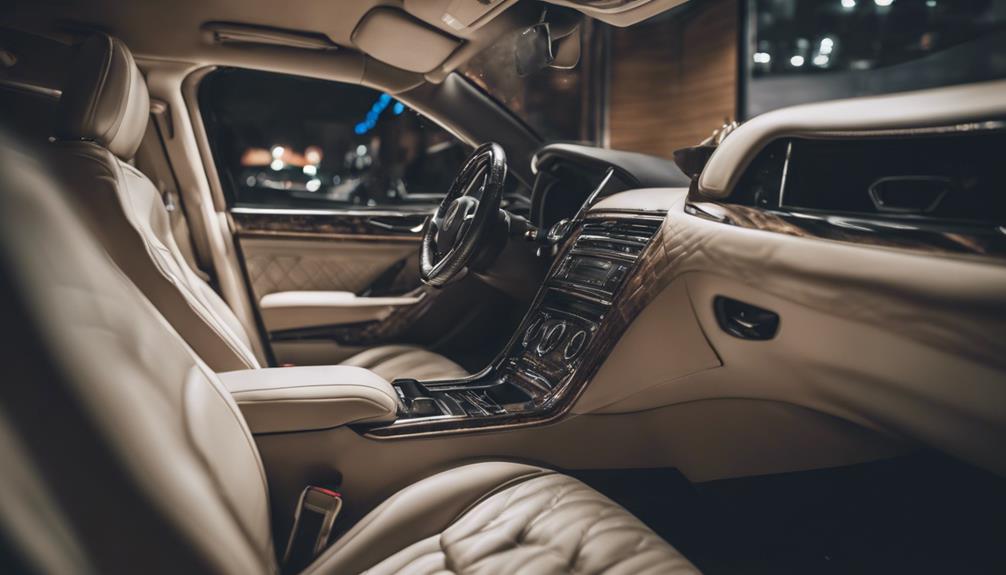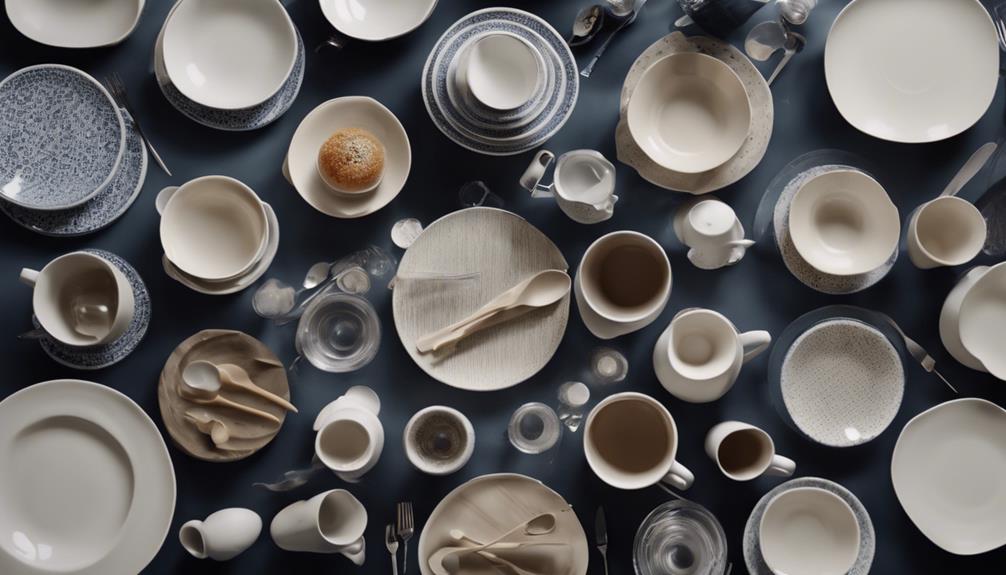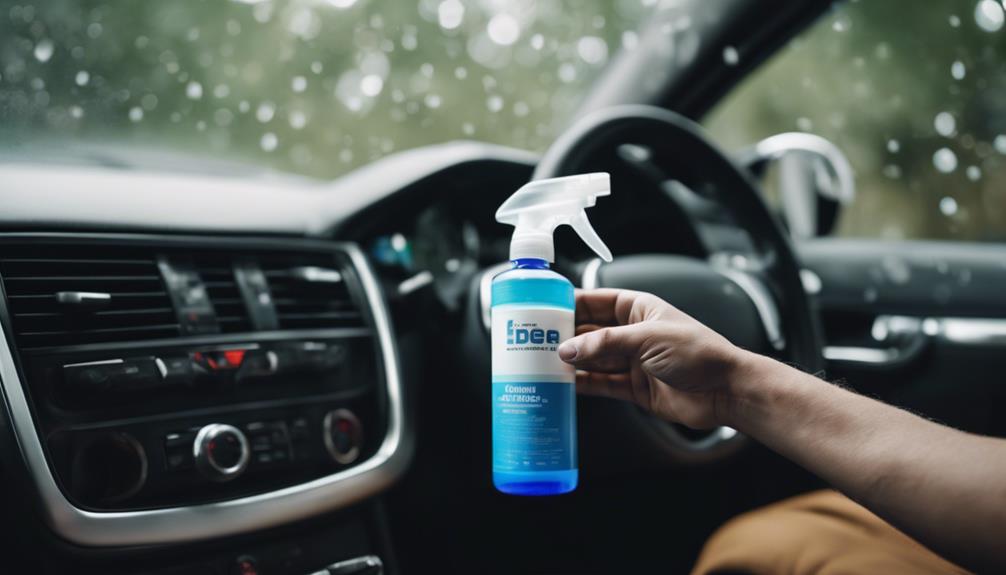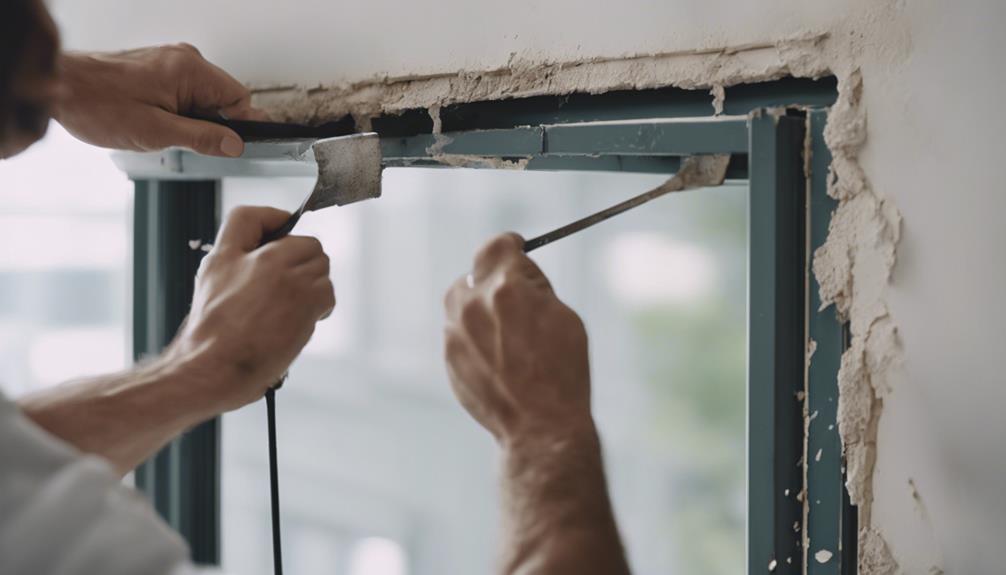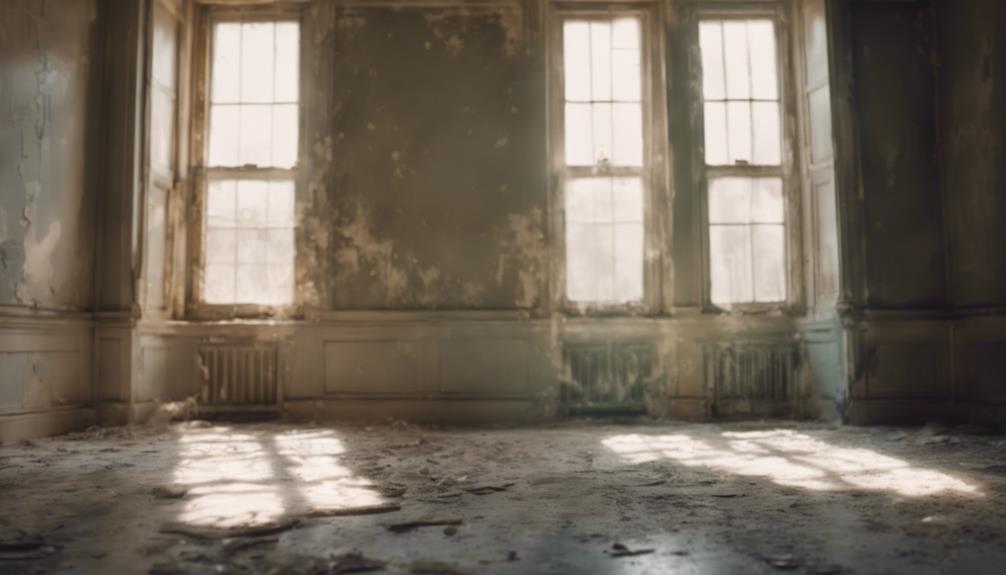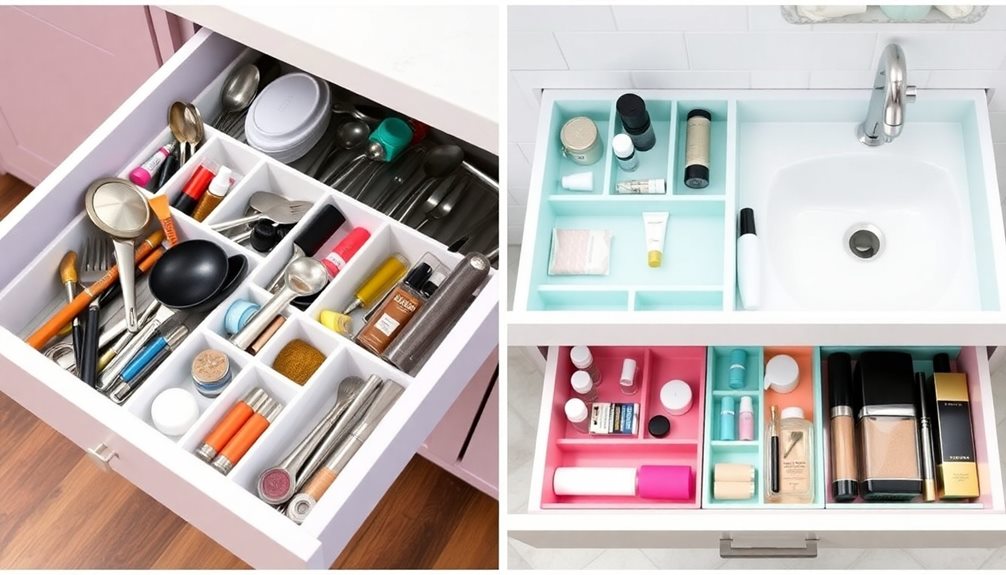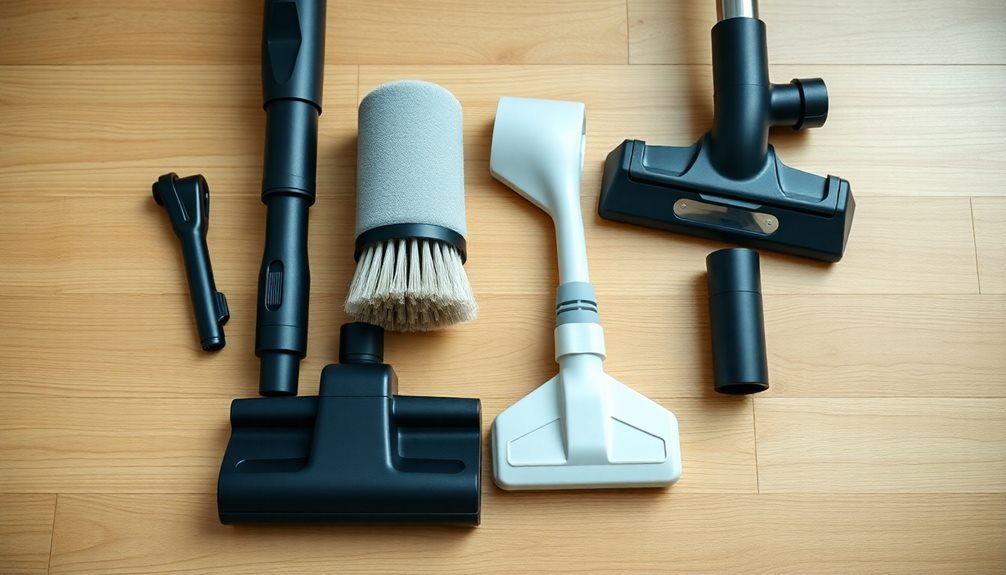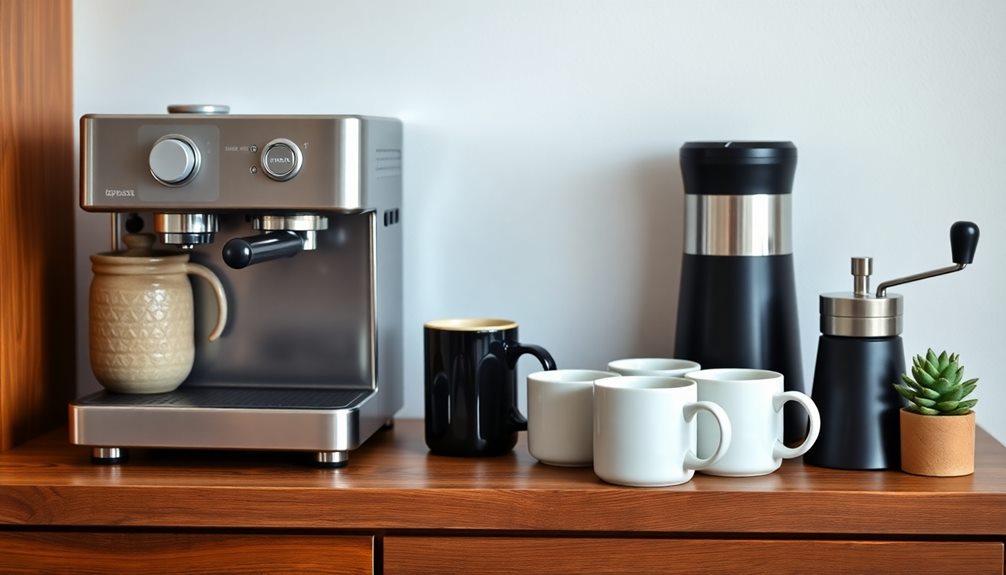Looking to enhance the interior of your car? Visit Katzkin Houston for custom leather seat designs. They offer a range of styles including heating and ventilation options that can transform the look and feel of your car. With locations in The Woodlands, Spring, and more, you can count on expert craftsmanship backed by a 3-year warranty. Leather seats not only add a touch of luxury to your car but are also easy to clean and can increase its resale value. Their technicians are experienced in working with all vehicle models, ensuring top-notch service. Trust Katzkin to provide quality and comfort, improving your overall driving experience. Ready to give your car a luxury upgrade? Look no further than Katzkin Houston!
Key Takeaways
- Katzkin Houston specializes in custom auto upholstery for car interior redo services.
- Locations in The Woodlands, Spring, Baytown, Pasadena, and Sugar Land offer leather seat designs.
- Skilled technicians with over 35 years of expertise handle all vehicle models.
- Competitive pricing ranging from $500 to $2000 with a 3-year/36k mile warranty on services.
- Services include custom leather seat repair, restoration, and customization for added value.
Katzkin Houston: Custom Leather Seat Designs
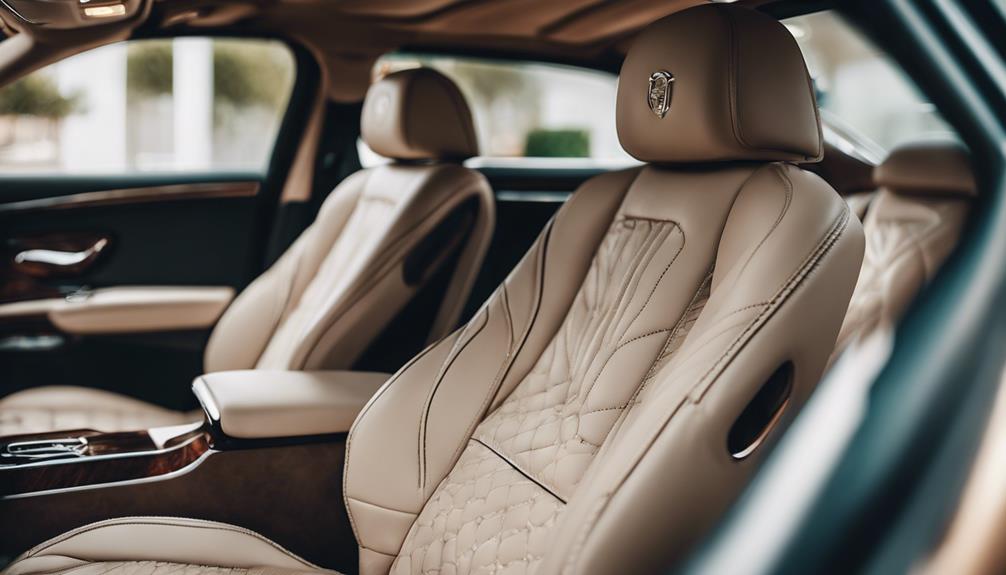
If you're in Houston and looking to upgrade your car interior, consider Katzkin for their excellent custom leather seat designs. Katzkin Houston specializes in custom auto upholstery, offering a wide range of options for cars, trucks, and SUVs. Their custom leather seats come in various styles and can even be equipped with heating and ventilation features for added comfort. Whether you drive a Jeep Wrangler, Toyota Tacoma, Ford F-150, or any other vehicle, Katzkin technicians have the expertise to transform your interior. With a remarkable 4.7-star rating from thousands of satisfied customers, you can rely on the high quality of their work.
Moreover, Katzkin goes the extra mile by providing a 3-year/36k mile warranty on all their custom leather car seat repair services. This warranty not only guarantees customer satisfaction but also gives you peace of mind knowing that your investment is protected. So, if you want to give your car a luxurious upgrade with custom auto upholstery, Katzkin Houston is the place to go.
Auto Upholstery Shop Locations in Houston

When searching for auto upholstery shop locations in Houston, you'll find a variety of options to choose from, including the well-known Katzkin Houston dealerships.
Katzkin Houston offers custom leather seat designs at various locations such as The Woodlands, Spring, Baytown, Pasadena, Sugar Land, and more. These high-quality leather seat covers are tailored to your vehicle, providing a luxurious and personalized touch to your car interior.
Katzkin technicians stand behind their work by offering a 3-year/36k mile warranty on all custom leather car seat repair services, ensuring your satisfaction and peace of mind. Customers rave about the stellar service provided by Katzkin, with thousands of reviews giving them an impressive 4.7-star rating.
If you're looking to upgrade your car interior with premium leather car upholstery, Katzkin Houston is the place to go for exceptional craftsmanship and outstanding customer service.
High-Quality Leather Seat Covers Installation
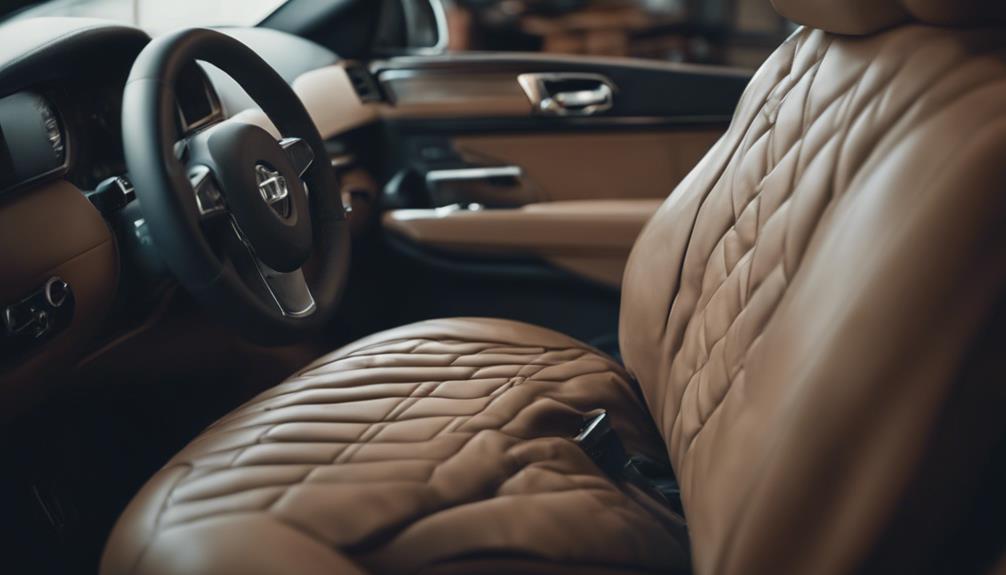
When it comes to upgrading your car's interior, installing high-quality leather seat covers can transform both the look and feel of your vehicle.
Not only do leather seat covers add a touch of luxury, but they also provide durability and comfort for your everyday drives.
Understanding the installation process and the benefits of leather seats can help you make an informed decision on enhancing your car's interior.
Leather Seat Benefits
By opting for high-quality leather seat covers installation, you can enhance both the aesthetics and comfort of your vehicle to a great extent. Leather seats not only add a touch of luxury to your car's interior but also provide several benefits that make them a popular choice among car owners. Check out the table below to discover some of the advantages of leather seats:
| Leather Seat Benefits | |
|---|---|
| 1. Luxurious Look | Enhances the overall appearance of your car interior. |
| 2. Durability | Leather is a durable material that can withstand wear and tear. |
| 3. Easy to Clean | Spills and stains can be easily wiped off leather seats. |
| 4. Comfort | Provides a comfortable seating experience, especially on long drives. |
| 5. Resale Value | Leather seats can increase the resale value of your vehicle. |
Installation Process
To enhance the comfort and style of your vehicle's interior, consider opting for the installation of high-quality leather seat covers. When it comes to getting your auto trim upgraded, choosing Katzkin is a wise decision. Here are some reasons why their installation process stands out:
- Experienced Technicians: Katzkin technicians are skilled in replacing and installing premium leather seat covers.
- Excellent Reputation: With a 4.7-star rating from thousands of reviews, you can trust their custom leather car seat repair services.
- Warranty Coverage: Enjoy peace of mind with a 3-year/36k mile warranty on all custom leather car seat installations.
- Wide Vehicle Compatibility: Katzkin can reupholster seats in various vehicle models, including popular ones like Jeep Wrangler, Toyota Tacoma, and Ford F-150.
Experienced Technicians for Various Vehicle Models

When it comes to getting your car interior redone, you want skilled technicians who can handle all vehicle models with ease. These experienced professionals offer tailored services to suit your specific car needs, ensuring a high-quality result every time.
Trust in their expertise to repair and replace interior components like seats, headliners, carpets, and more for a fresh look inside your vehicle.
Skilled Technicians Available
Skilled technicians with over 35 years of expertise specialize in custom car upholstery in Houston, catering to a wide range of vehicle models, from classic cars to modern automobiles. Here are four reasons why these technicians stand out:
- Extensive Experience: They've been repairing and restoring various vehicle models for decades.
- Craftsmanship: Known for their high-quality work and attention to detail in custom car upholstery.
- Custom Leather Seats: Offer custom leather car seat designs with a range of style options.
- Warranty: Provide a 3-year/36k mile warranty on all custom leather car seat repair services for customer satisfaction.
Trust these experienced technicians for exceptional car interior redos tailored to your needs.
Tailored Services for Cars
With experienced technicians specializing in custom leather seat designs for various vehicle models like Jeep Wrangler, Toyota Tacoma, and Ford F-150, Katzkin offers tailored services to enhance your car's interior.
Katzkin's custom auto upholstery services can transform your driving experience by providing heated and ventilated seats in a range of style options, adding comfort and luxury to your vehicle.
They replace existing cloth or leather with high-quality leather seat covers, greatly increasing your car's value.
Katzkin's 4.7-star rating based on thousands of reviews speaks to their commitment to quality, backed by a 3-year/36k mile warranty on all custom leather car seat repair services.
Experience the difference with Katzkin's renowned reputation in auto upholstery, delivering excellent workmanship in locations like Houston and surrounding cities.
3-Year/36k Mile Warranty on Car Seat Repair
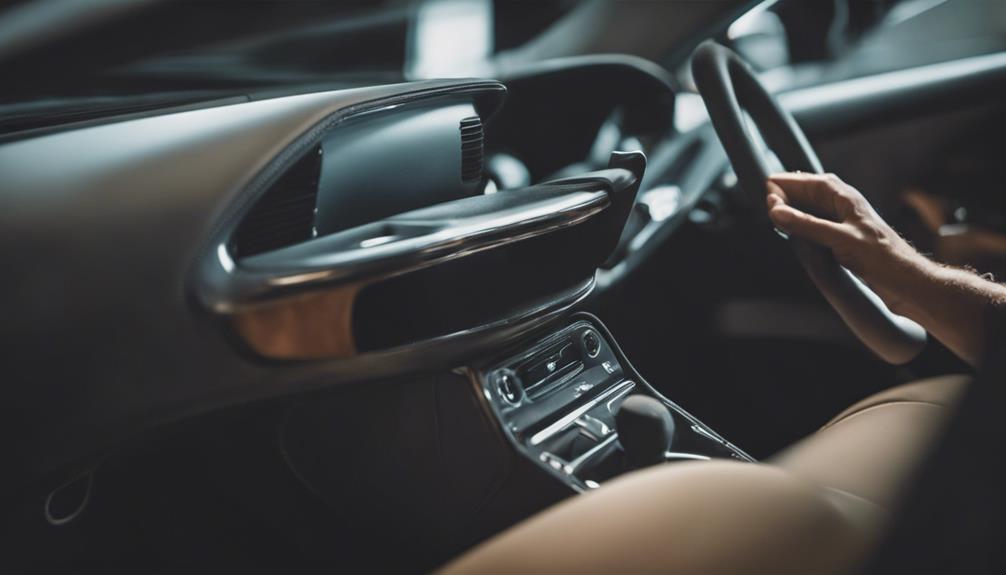
For those seeking reassurance and reliability in their car seat repair, Katzkin's 3-year/36k mile warranty stands as a confirmation of quality craftsmanship and customer satisfaction. Here's why you should consider this warranty for your custom auto seat repair:
- Comprehensive Coverage: Katzkin's warranty guarantees that any issues with your custom leather car seat repair within three years or 36,000 miles are taken care of, giving you peace of mind.
- Impressive Reputation: With thousands of reviews contributing to Katzkin's impressive 4.7-star rating, you can rely on the quality of their car seat repair services.
- Experienced Technicians: The technicians at Katzkin have the expertise to work on various vehicle models, including popular ones like Jeep Wrangler, Toyota Tacoma, and Ford F-150, ensuring a job well done.
- Quality Assurance: With Katzkin's warranty, you can have confidence in the quality and reliability of your custom leather car seat repair, knowing that you're in good hands.
Custom Upholstery Services in The Woodlands
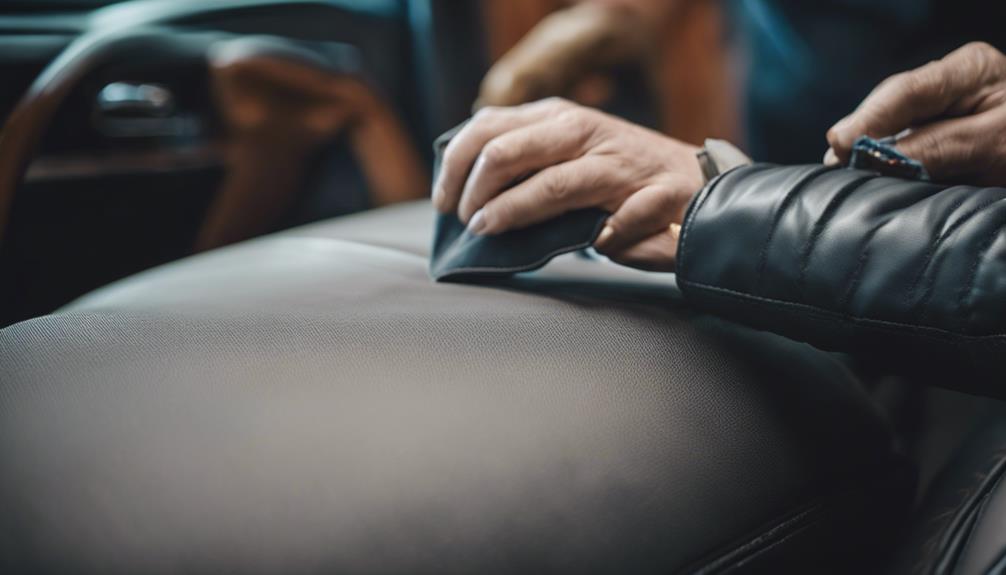
When considering custom upholstery services in The Woodlands for your car interior, you'll find a range of top upholstery choices tailored to your preferences. These services not only offer personalized designs but also guarantee cost-effective solutions and reasonable timelines for completion.
Upgrade your car's interior with these services, and enjoy a fresh, stylish look that suits your taste and budget.
Top Upholstery Choices
Among the excellent upholstery choices available at the Custom Upholstery Services in The Woodlands are custom leather seat designs for cars, trucks, and SUVs. Here are some of the fantastic options you can consider for your custom auto upholstery needs:
- Customized leather seats tailored to your preferences.
- Heated seats for a cozy ride during colder months.
- Ventilated seats to keep you cool and comfortable on hot days.
- Various style choices to match your vehicle's aesthetic.
With over 35 years of experience, the technicians at Custom Upholstery Services in The Woodlands are experts in providing exceptional custom leather upholstery solutions to enhance the look and feel of your vehicle's interior.
Cost and Timelines
Considering the superior upholstery choices available at Custom Upholstery Services in The Woodlands, it's important to now explore the cost and timelines associated with their custom auto upholstery services.
Custom auto upholstery projects in The Woodlands come at a competitive price, ranging from $500 to $2000 depending on the level of customization you desire. The timelines for these projects typically span from 1 to 2 weeks, ensuring a speedy turnaround without compromising on quality.
Skilled technicians in The Woodlands guarantee excellent craftsmanship, delivering a high-quality finish within the specified timeframe. When opting for custom auto upholstery services in The Woodlands, you can expect detailed quotes outlining both the costs involved and the projected timelines, giving you a clear understanding of what to anticipate for your car interior redo.
Custom Car Upholstery in Spring, TX
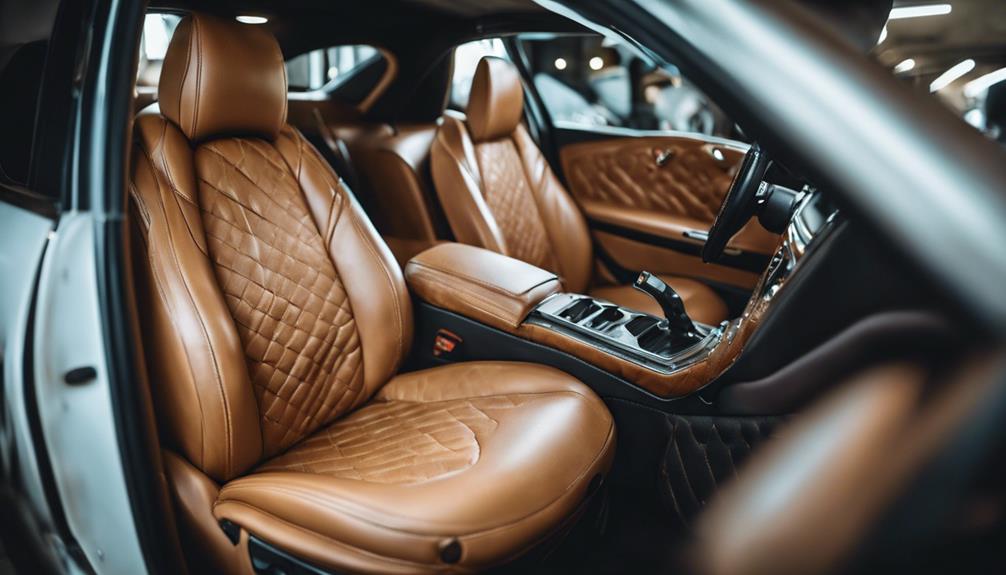
Specializing in customizing car interiors with over 35 years of experience, Custom Car Upholstery in Spring, TX offers a wide range of tailored options to meet your vehicle preferences.
Here are some reasons why you should consider their services:
- Expertise: With a wealth of experience in custom auto upholstery, they've honed their skills to perfection.
- Customization: From leather seats to unique stitching, they can tailor every detail to your liking.
- Quality Craftsmanship: Known for their high-quality work, they make sure that your car's interior will look stunning.
- Affordability: Despite their exceptional work, they offer the lowest prices in town.
When you choose Custom Car Upholstery in Spring, TX, you're not just getting a service; you're investing in a transformation. Let them bring your car interior dreams to reality with their expertise and dedication to excellence.
Custom Leather Car Seat Repair Services
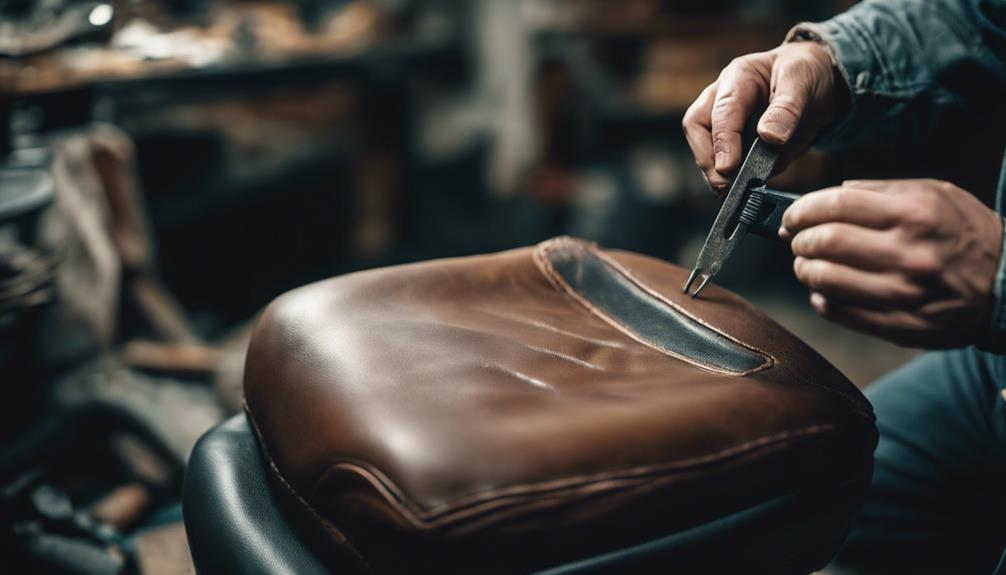
If you're looking to enhance the luxury and comfort of your vehicle's interior, consider the custom leather car seat repair services offered by Katzkin. Katzkin provides custom leather car seat designs and installation services for a variety of vehicle models. Their technicians have earned an impressive 4.7-star rating from thousands of satisfied customers, ensuring excellent service. Customers can also enjoy a 3-year/36k mile warranty on all custom leather car seat repair services, giving you peace of mind. Katzkin specializes in reupholstering seats on popular vehicles like the Jeep Wrangler, Toyota Tacoma, Ford F-150, and more. Their high-quality leather seat covers not only enhance the aesthetics of your car but also greatly improve the driving experience. Investing in leather seats from Katzkin can add value to your vehicle while providing you with a luxurious and comfortable ride.
| Top Features | Benefits | Why Choose Katzkin? |
|---|---|---|
| Custom Designs | Personalized luxury | Expert Craftsmanship |
| Warranty Included | Peace of mind | High Customer Ratings |
| Wide Vehicle Coverage | Fits various car models | Enhances Driving Comfort |
Enhance Your Driving Experience With Katzkin
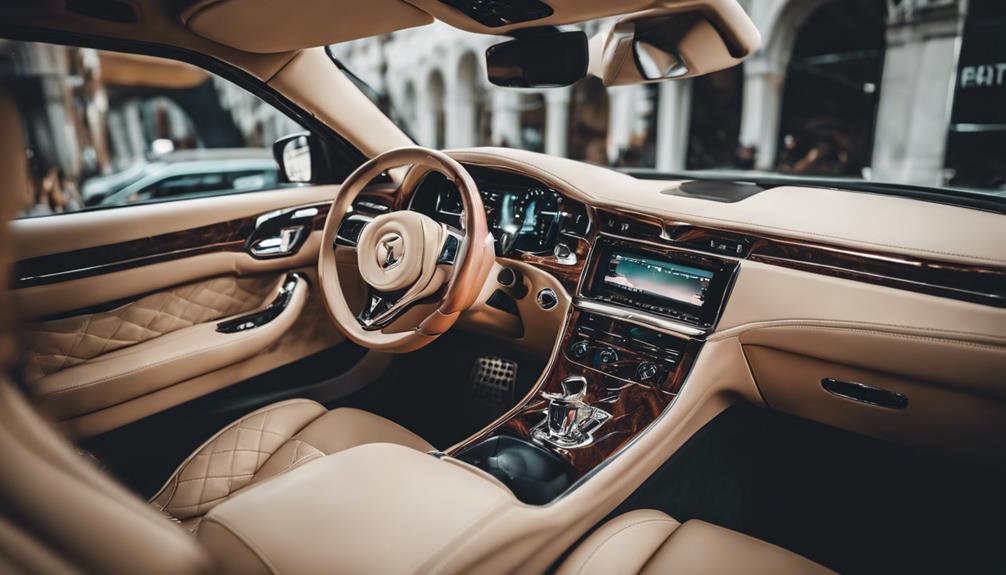
Looking to elevate your driving experience to a new level of luxury and comfort? Katzkin is here to transform your car interior with their custom auto leather seat designs and installation services.
Check out these reasons why Katzkin is the perfect choice for enhancing your driving experience:
- Personalized Style: Choose from a variety of style options to tailor your car's interior to your preferences.
- Heated and Ventilated Seats: Enjoy the comfort of heated seats in winter and stay cool with ventilated seats in summer.
- Expert Technicians: With a 4.7-star rating based on thousands of reviews, Katzkin technicians showcase their expertise in replacing and installing leather seats on various vehicle models.
- Warranty Assurance: Benefit from a 3-year/36k mile warranty on all custom leather car seat repair services provided by Katzkin, ensuring quality and giving you peace of mind.
Value-Adding Car Interior Redone Services
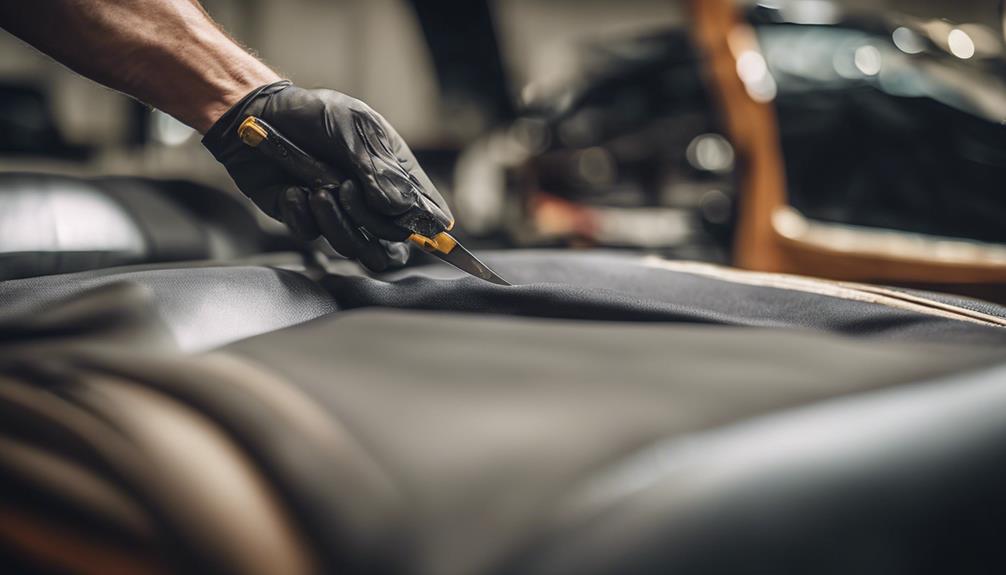
When considering value-adding car interior redone services, prioritize quality craftsmanship and customization for a fresh and personalized look. Opting for services that enhance both the aesthetics and functionality of your vehicle can greatly increase its value and your driving experience. Here are some key services that can transform your car's interior:
| Service | Description |
|---|---|
| Upholstery Repair | Repair cracked, worn, torn, faded, or stained upholstery for a refreshed appearance. |
| Custom Car Upholstery | Benefit from over 35 years of experience, offering high-quality craftsmanship and customization options. |
| Restoration Auto Upholstery | Specialize in restoring classic car seats and panels, matching original fabrics, and providing modern updates. |
These auto interior services cater to a variety of needs, from basic repairs to full customization, ensuring that your car's interior reflects your style and personality. Consider these options to add value and a personal touch to your vehicle.
Frequently Asked Questions
Is It Possible to Redo the Interior of a Car?
Yes, it's absolutely possible to redo the interior of your car! Professional auto upholstery shops in Houston can help you with that. They offer services like repairing and replacing upholstery, carpets, and headliners. You can even get custom car upholstery or restore classic car interiors.
At places like Katzkin in Houston, you can choose from custom leather seat designs and get heated, ventilated seats with a warranty for repairs. So, go ahead and give your car's interior a fresh look!
How Much Does It Cost to Change Interior Car Seats?
Changing interior car seats can vary in cost based on material and complexity. Prices range from $200 to $3000 per seat. Leather seats with extra features can hit $2500. Fabric replacements are cheaper but less durable.
Factors like car model and customization affect prices. For quality leather covers, expect to pay $1500 to $3000 for both front seats.
Consider your needs and budget when deciding on a new interior look.
How Do You Fix a Torn Car Interior?
To fix a torn car interior, you'll need specialized techniques like stitching, patching, and blending. Assess the damage, choose the right method, and skillfully mend the tear. This process enhances your vehicle's appearance, comfort, and value.
Professional services can repair tears in upholstery, leather, vinyl, or fabric materials. By addressing the damage promptly, you can enjoy a seamless and long-lasting repair that revitalizes your car's interior.
How Do You Fix Car Interior Cloth?
To evaluate car interior cloth, start by analyzing the damage. For tears, holes, or burns, use fabric patches or adhesive bonding techniques.
Regular cleaning with methods like vacuuming, spot cleaning, and steam cleaning can maintain the appearance. Upholstery shops offer professional repair services, while DIY kits are available for minor fixes.
Prevent damage by using seat covers, avoiding sharp objects, and cleaning spills promptly. Proper care keeps your car interior looking great!
Conclusion
So, if you're in search of getting your car interior redone, there's no need to search any longer than Katzkin Houston!
With custom leather seat designs, experienced technicians, and a warranty on car seat repair, you can enhance your driving experience in style.
It's like giving your car a makeover that will make heads turn and add value to your ride.
Don't settle for ordinary, opt for extraordinary with Katzkin!
